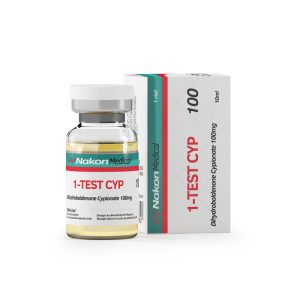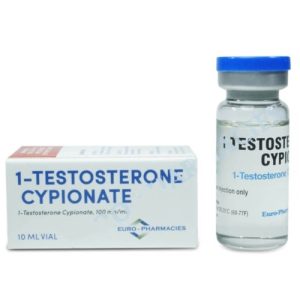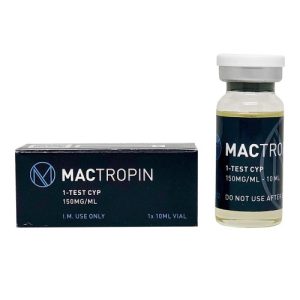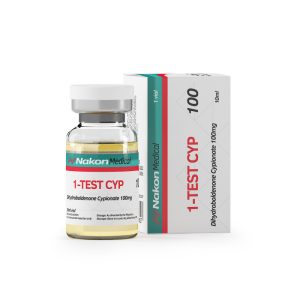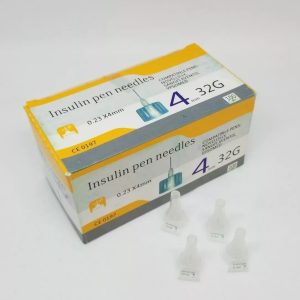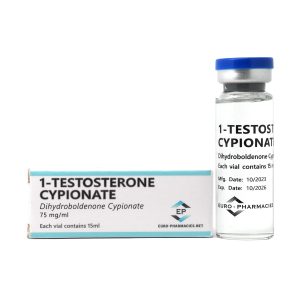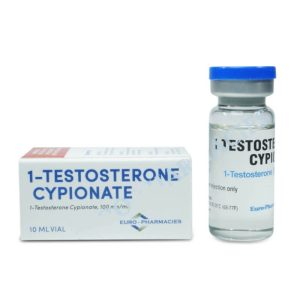Masteron is an injectable steroid containing the propionate form of the active substance drostanolone. Drostanolone is a derivative of dihydrotestosterone, 2a-methyl-dihydrotestosterone. Due to the elimination of the double bond between positions 4 and 5, drostanolone has been shown to be virtually insensitive to the action of aromatase and thus to conversion to estradiol. In addition, studies show that drostanolone has sufficiently pronounced anti-estrogenic activity. This is not strange if you remember that this drug is a derivative of dihydrotestosterone, and that DHT directly weakens the activity of estrogens in tissues (estrogens attach to their receptors, but do not activate them). Masterone is a moderate androgen with marked anabolic properties.
Drostanolone can be described as a “safe” form of testosterone, lacking the drawbacks of its big brother, while retaining some of the advantages of androgens.
Masteron’s characteristics are very similar to those of the most popular testosterone of all time.
From the very first injections of Masteron, the user is sure to experience a pronounced anabolic effect, i.e. an increase in muscle mass. Drostanolone, like testosterone, acts on the nervous system, alleviating feelings of fatigue and boosting general tone and mood. Masteron is not a basic universal steroid. It’s a highly specialized drug, created to solve specific, highly monotonous tasks.
As drostanolone is unflavored in almost all dosages and is not converted to estrogen, it cannot be replaced in the pre-competition preparation of bodybuilders. The last 3 to 4 weeks before the “start” are the most important: it’s during this period that the athlete conditions his body (final drying phase with the use of a low-carb/no-carb diet, work on “weak” points and final correction of the silhouette). Testosterone Masteron, like no other pharmaceutical preparation, enables you to prepare for competitions and stage in the shortest possible time and with maximum effect.
Masteron testosterone is able to give muscles a hard, “full”, supple, firm appearance and maximum sharpness of contours; it emphasizes the athlete’s strong points and masks weak ones. Skin becomes thinner, veins stand out, the separation of dry flesh reaches a perfect state, even buttocks split. Of course, drostanolone can’t deliver such results on its own, which is why it’s usually used in various combinations with other ACs.
Drostanolone makes it possible to train under these extreme conditions without significant loss of strength and mass, and helps to maintain a high training intensity with the possibility of reducing the calorie content of the diet to critical values.
This moderate androgen gives the necessary boost in the final weeks of competition preparation, prevents unplanned meat loss during the “carbohydrate-free box”, combats the enormous content of the catabolic hormone cortisol in the blood of a dehydrated athlete, etc. etc.
The second main application of Masteron Solo concerns various sporting disciplines, whose active participation is not possible without constant doping controls during competitions. As Drostanolone is rapidly excreted by the body and the detection of its metabolites in urine is extremely difficult, this “safe testosterone” is ideal for professional athletes.
Drostanolone side effects
Most side effects stem from drostanolone’s similarity to the DHT formula. Possible side effects include
Baldness. This is due to the substance’s negative effect on hair follicles. However, baldness is rare in athletes with no genetic predisposition. Prostate hypertrophy. The reason for this is that the prostate is overly sensitive to a large number of androgens. This disease also occurs in genetically predisposed individuals. As a preventive measure, a finasteride-based treatment is available. However, the latter blocks DHT and may destroy all the properties of drostanolone, for which it is taken.
Acne eruptions. All androgens can cause acne. The best preventive measure is diet and external antibacterial agents. The drug is therefore safe for athletes who do not have the corresponding genetic predispositions.
Showing 1–9 of 6376 results


